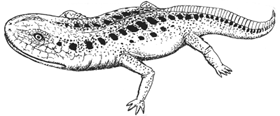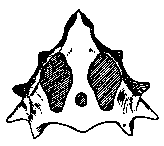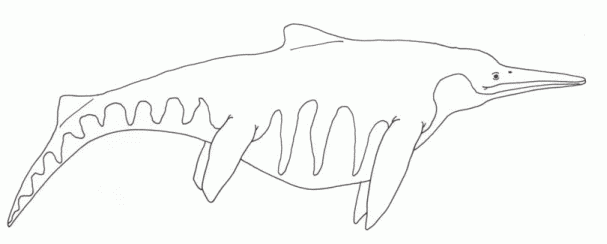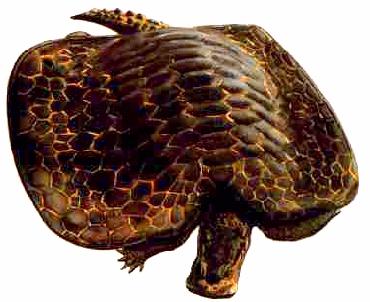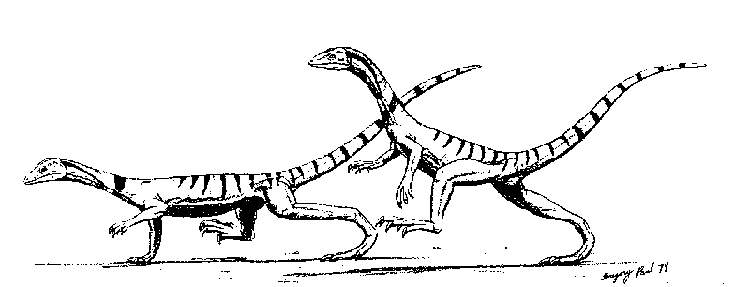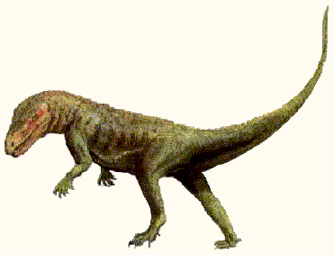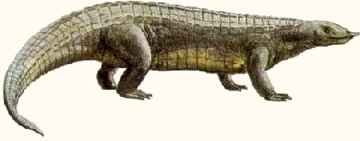Dinosaurios y animales prehistoricos argentinos/Ischigualasto fauna
Pelorocephalus ischigualastensis Bonaparte, 1975 was a chigutisaur, a type of temnospondyl amphibian known only from Gondwana/South Pangea. The late Carnian was the high point of these creatures; as well as several species from Argentina, there are two genera from the Upper Maleri Formation of India. These specialized short-headed amphibians were one of the very few labyrinthodonts to survive the end Triassic extinctions. During the Jurassic and Middle Cretaceous crocodiles are unknown and giant Chigutisaurids (3 to 5 meters) flourished in south-east Gondwana. Pelorocephalus was originally known as Chigutisaurus, the genus from which the family derives its name. But whereas Chigutisaurus was named in 1948, the Pelorocephalus moniker goes back a further four years, to 1944, and hence has priority, under the formal rules of Linnean (binomial) nomenclature Carnian species:
Pelorocephalus cacheutensis (Rusconi, 1953)
Pelorocephalus ischigualastensis Bonaparte, 1975 - Late Carnian - Ischigualasto Formation, San Juan Province, Argentina (Southwest Pangea)
Pelorocephalus mendozensis Cabrera, 1944 [= Chigutisaurus tunuyanensis Rusconi, 1948b , ??Otuminisaurus limensis Rusconi, 1948 [ref Marsicano 1996 ] (Latest Carnian/early Norian) - Cacheuta Formation Cerro Bayo, West-Central Argentina.
Pelorocephalus tenax (Rusconi, 1949)
Compsocerops cosgriffi Sengupta 1995 - Latest? Carnian, Upper Maleri Formation, Pranhita-Godavari Valley, India [ref. Lucas 1998]
Kuttycephalus triangularis Sengupta 1995 - Latest? Carnian, Upper Maleri Formation, Pranhita-Godavari Valley, India [ref. Lucas 1998]
Links: Pelorocephalus ischigualastensis
References: Bonaparte, 1975
